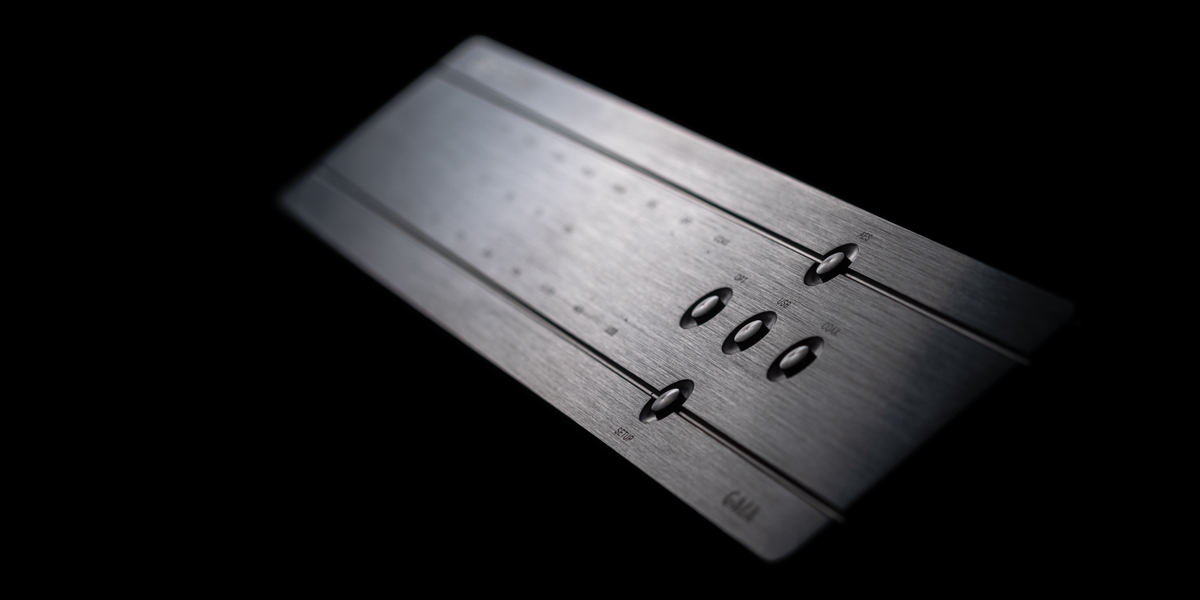Past recently reviewing Denafrips Terminator Plus its global distributor – Alvin Chee of Vinshine Audio – suggested to follow up with Denafrips Gaia DDC packed with utilities made to compliment this DAC. But more importantly, this opportunity allowed me to finally get up to speed with the I2S standard. Enjoy!
Introduction
My previous fairly limited exposure to digital-to-digital converters aka DDCs narrows down to only two such products I’ve used way in the past; John Kenny’s JKSPDIF Mk3 and Audiobyte Hydra-X+. The former was a part of my setup along with Asus’ balanced Essence III that had its USB input dead on arrival. Back then I could either return this DAC/amp package and for several weeks remain without a component vital for my reviewer job, or find a workaround and move from there. In fact, that snafu introduced me to the DDC breed. Long story short, the JKSPDIF Mk3 passed data from my PC‘s USB out to the Asus’ coaxial input via BNC plus a BNC/coax adapter and that worked brilliantly. Although I originally thought that John Kenny’s device was all about changing one digital standard to another, its audibly beneficial input in my home system went a fair bit beyond purely functional action. Useful utilities and improved performance served at one go? Yes, please!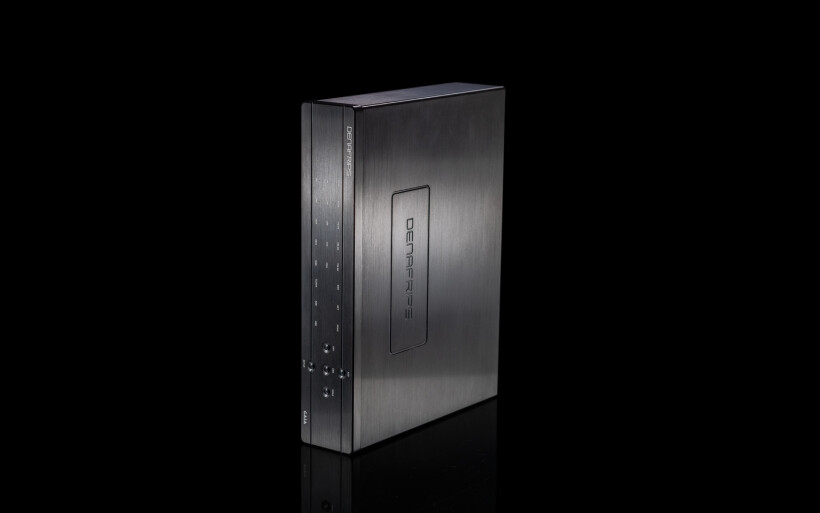 The JKSPDIF Mk3’s internal batteries in time developed a fault that made it unusable in the long run, but given how helpful this small box was I saw its kind as essential in my platform. A bit later Audiobyte’s founder Nicolae Jitariu sent over his Hydra-X+ that housed two quality clocks, FPGA and batteries. Considering positive impact on sonics and reasonable price, this black critter quickly turned out a keeper that served me well until LampizatOr Level 7’s arrival several springs later. That DAC accepted only DSD either native or upsampled from PCM on my laptop and exclusively via USB, so Audiobyte’s box had to retire some six years ago. Since then USB has been my interface of choice that naturally kept any DDC craves at the door. Recently that changed, however.
The JKSPDIF Mk3’s internal batteries in time developed a fault that made it unusable in the long run, but given how helpful this small box was I saw its kind as essential in my platform. A bit later Audiobyte’s founder Nicolae Jitariu sent over his Hydra-X+ that housed two quality clocks, FPGA and batteries. Considering positive impact on sonics and reasonable price, this black critter quickly turned out a keeper that served me well until LampizatOr Level 7’s arrival several springs later. That DAC accepted only DSD either native or upsampled from PCM on my laptop and exclusively via USB, so Audiobyte’s box had to retire some six years ago. Since then USB has been my interface of choice that naturally kept any DDC craves at the door. Recently that changed, however.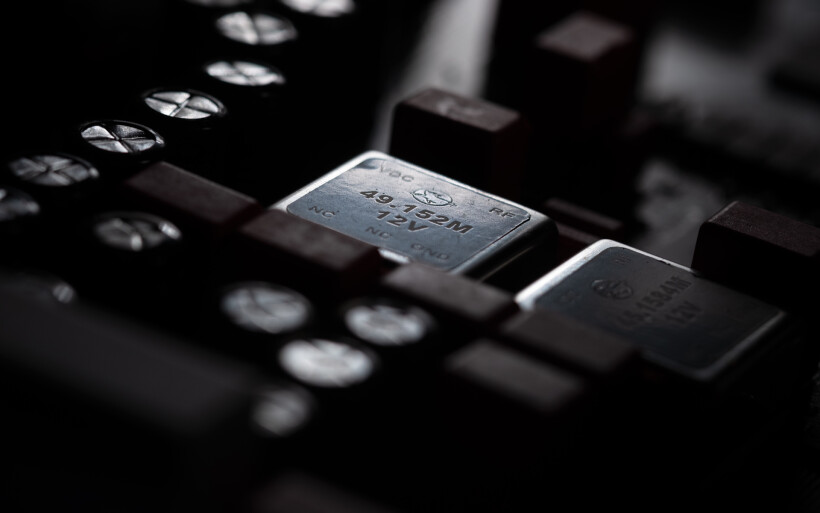 Its usual digital suspects aside (USB and coaxial/optical S/PDIF), Denafrips Terminator Plus DAC reviewed here also featured twin AES/EBU and whooping three I2S to secure comms with as many transports capable of sending data over this protocol as possible. To quote myself: “This interface designed to internally transmit signal between circuits separates clock and serial data, so the former doesn’t have to be recovered from it upon arrival to the receiver and that lowers jitter. Although I²S isn’t standardized, manufacturers include it in form they think is best, which is why we’ve seen it on HDMI, RJ45, BNC and S-Video. Lack of the industry’s agreement on this front also stretches to different pinouts to complicate it even more, and potentially prevent talk between a transport that sends data via I²S to a DAC. Still, many consider this bus as better on sonics versus other digital inputs. In this context Denafrips Terminator Plus’ generous I²S socketry with changeable pins significantly reduces non-compliance with transports willing to connect accordingly and that’s a big plus.”
Its usual digital suspects aside (USB and coaxial/optical S/PDIF), Denafrips Terminator Plus DAC reviewed here also featured twin AES/EBU and whooping three I2S to secure comms with as many transports capable of sending data over this protocol as possible. To quote myself: “This interface designed to internally transmit signal between circuits separates clock and serial data, so the former doesn’t have to be recovered from it upon arrival to the receiver and that lowers jitter. Although I²S isn’t standardized, manufacturers include it in form they think is best, which is why we’ve seen it on HDMI, RJ45, BNC and S-Video. Lack of the industry’s agreement on this front also stretches to different pinouts to complicate it even more, and potentially prevent talk between a transport that sends data via I²S to a DAC. Still, many consider this bus as better on sonics versus other digital inputs. In this context Denafrips Terminator Plus’ generous I²S socketry with changeable pins significantly reduces non-compliance with transports willing to connect accordingly and that’s a big plus.”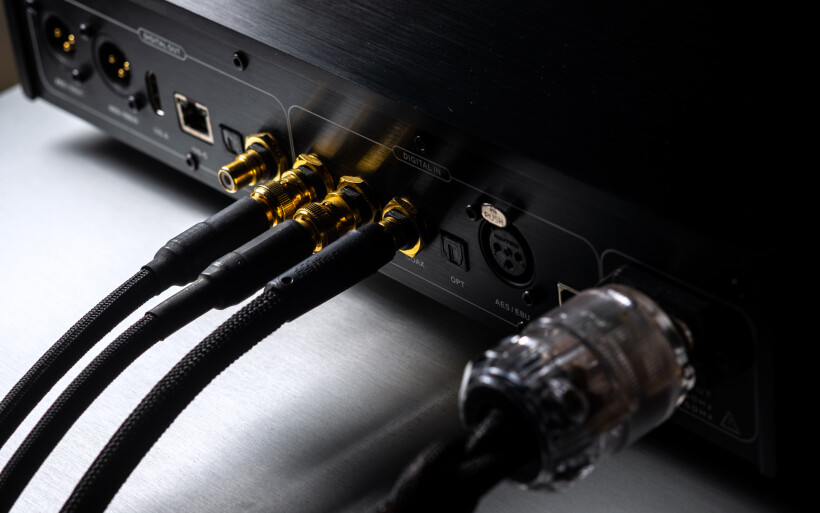 Needless to say, going into Terminator Plus via I2S was the manufacturer’s clear suggestion. At least that’s what I thought after seeing multiple such inputs on its rear on top of the option to reconfigure their pins. Alas, without having nearby any product that would send data over I2S to this DAC I couldn’t. At the same time I felt that I’ve missed a rather important feature. Fast forward a week after publishing that story. Vinshine Audio’s founder/owner Alvin Chee offered to dispatch my way Denafrips Gaia digital-to-digital converter tailored to work with his D/A loaner still at my place, just so at once I could investigate the DDA sort again, further expand my familiarity with Denafrips’ roster and cover previously unknown bases.
Needless to say, going into Terminator Plus via I2S was the manufacturer’s clear suggestion. At least that’s what I thought after seeing multiple such inputs on its rear on top of the option to reconfigure their pins. Alas, without having nearby any product that would send data over I2S to this DAC I couldn’t. At the same time I felt that I’ve missed a rather important feature. Fast forward a week after publishing that story. Vinshine Audio’s founder/owner Alvin Chee offered to dispatch my way Denafrips Gaia digital-to-digital converter tailored to work with his D/A loaner still at my place, just so at once I could investigate the DDA sort again, further expand my familiarity with Denafrips’ roster and cover previously unknown bases.
Build
Denafrips Gaia serves three purposes. It connects digital audio products which otherwise wouldn’t communicate due to i.e. missing/incompatible socketry. Your DAC has a USB but a transport sends out only S/PDIF? Today’s hardware will make them talk. Secondly, it can be used as a digital hub for multiple devices; i.e. a CD player and laptop at its inputs, and a headfi DAC/amp and speakers with in-built DAC at simultaneously active outputs. In this setup switching between listed transports would take just one button press on Gaia’s front panel, which is far more convenient than reconnecting all necessary cables. Although that functionality rarely comes in handy, comparing on the fly a DAC’s digital inputs or two such standalone products is very useful from my perspective. And lastly, DDCs loaded with their own buffers and clocks condition digital data prior to sending it to downstream devices, so effectively they’re barriers in-between transports and sources, and having them there can impact sound as it turns out.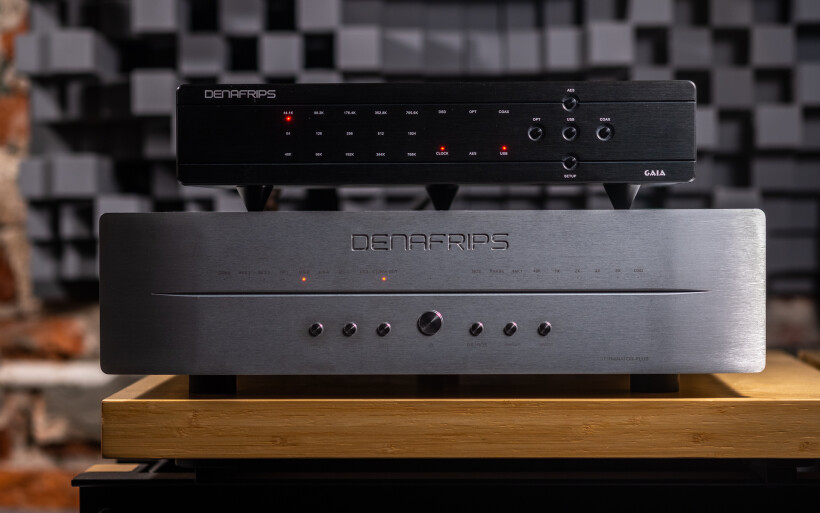 Two DDCs I’ve used years back introduced major sonic improvements mainly because my first laptop for audio was a far cry from a proper digital transport. Lampizator Level 7 DAC had to work on data and junk received from it via USB. Years later fidata’s server/streamer and LampizatOr Golden Gate also produced more pleasing sound with iFi audio’s micro iUSB3.0 reclocker and iGalvanic3.0 isolator in-between. My laptop as much of a culprit as the USB pipeline itself was the obvious takeaway. In this context Denafrips Gaia acts similarly to iFi’s reclocking box yet conditions all its i/o including USB and scores far higher on utilities.
Two DDCs I’ve used years back introduced major sonic improvements mainly because my first laptop for audio was a far cry from a proper digital transport. Lampizator Level 7 DAC had to work on data and junk received from it via USB. Years later fidata’s server/streamer and LampizatOr Golden Gate also produced more pleasing sound with iFi audio’s micro iUSB3.0 reclocker and iGalvanic3.0 isolator in-between. My laptop as much of a culprit as the USB pipeline itself was the obvious takeaway. In this context Denafrips Gaia acts similarly to iFi’s reclocking box yet conditions all its i/o including USB and scores far higher on utilities.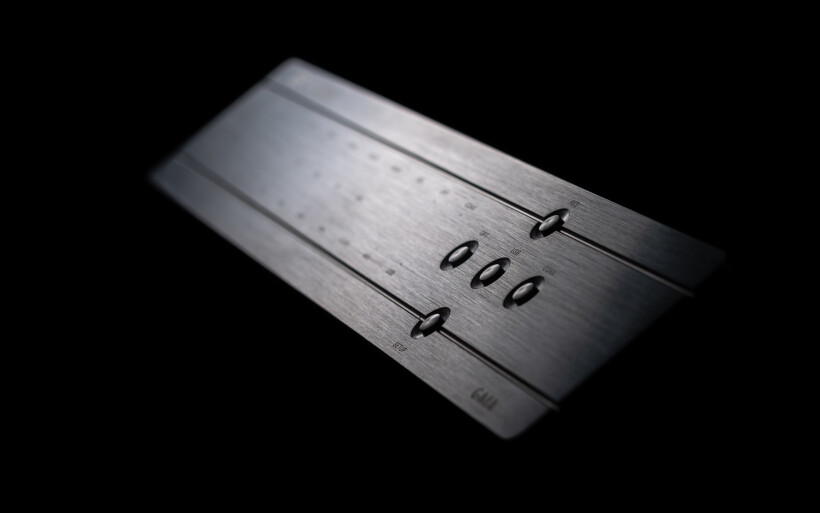 A compact cardboard with foamy interior stored Denafrips Gaia inside a synthetic bag. Lack of any extras other than a plastic warranty card with serial number was hardly a surprise. No RC wand anywhere in sight is not a con to me as long as it’s justified and this time around I believe it was. This report’s product was designed for delicate digital tasks, so here I’m guessing that an IR eye and according receiver could potentially generate noise bad for circuits nearby. Denafrips Gaia measures (W x D x H) 340 x 260 x 66mm and weighs enjoyable 6kg so is a breeze to handle. It can be had either dressed in silver or black. Its USB input accepts native PCM/DSD streams up to 768kHz/DSD512, I²S outputs respectively do 384kHz/DSD512 and remaining i/o max out at 24bit/192kHz PCM and DSD64 (via DoP). Power draw is ≤20W and worldwide voltages (100-240VAC, 50/60Hz) apply in the utmost convenient auto-sensing fashion.
A compact cardboard with foamy interior stored Denafrips Gaia inside a synthetic bag. Lack of any extras other than a plastic warranty card with serial number was hardly a surprise. No RC wand anywhere in sight is not a con to me as long as it’s justified and this time around I believe it was. This report’s product was designed for delicate digital tasks, so here I’m guessing that an IR eye and according receiver could potentially generate noise bad for circuits nearby. Denafrips Gaia measures (W x D x H) 340 x 260 x 66mm and weighs enjoyable 6kg so is a breeze to handle. It can be had either dressed in silver or black. Its USB input accepts native PCM/DSD streams up to 768kHz/DSD512, I²S outputs respectively do 384kHz/DSD512 and remaining i/o max out at 24bit/192kHz PCM and DSD64 (via DoP). Power draw is ≤20W and worldwide voltages (100-240VAC, 50/60Hz) apply in the utmost convenient auto-sensing fashion.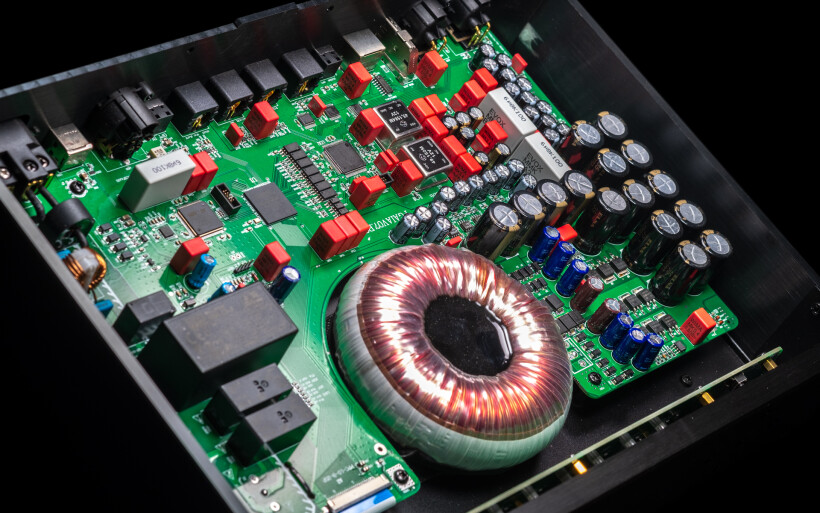 Gaia’s entire enclosure is made of thick machined aluminium panels bolted together. Its forehead features two tapered horizontal notches with several rows of red LEDs and silkscreen prints in-between, which indicate sampling rates (44.1/48kHz and their multipliers up to 705.6/768kHz plus DSD64/128/256/512/1024), selected inputs and external clock on/off. Five black pushbuttons aligned in a cross further to the right engage digital inputs, while the one marked ‘setup’ combined with others reconfigures pins of I²S outputs and straps Gaia to an external clock. Today’s buttons are pleasantly clicky, firm and free from any rattle, but I expected nothing less past my time with Terminator Plus that was as sorted on this count.
Gaia’s entire enclosure is made of thick machined aluminium panels bolted together. Its forehead features two tapered horizontal notches with several rows of red LEDs and silkscreen prints in-between, which indicate sampling rates (44.1/48kHz and their multipliers up to 705.6/768kHz plus DSD64/128/256/512/1024), selected inputs and external clock on/off. Five black pushbuttons aligned in a cross further to the right engage digital inputs, while the one marked ‘setup’ combined with others reconfigures pins of I²S outputs and straps Gaia to an external clock. Today’s buttons are pleasantly clicky, firm and free from any rattle, but I expected nothing less past my time with Terminator Plus that was as sorted on this count. Gaia’s cheeks and hood are clean brushed plates without any venting plots. It gets a bit warm during work, while three rubber footers on its underbelly add 18mm extra to the overall height. The business end houses Furutech’s quality IEC inlet, while i/o best described as unusually generous clearly separates into two groups. Available inputs from right to left are USB, AES/EBU, optical and coaxial S/PDIF plus two BNCs (45.12 and 49.15MHz) for an external clock. Digital outputs in the same order are coaxial and optical S/PDIF, RJ45 I²S-C (LVCMOS), HDMI I²S-A (LVDS) and twin AES/EBU. Gaia is a fully automated affair that doesn’t have to be turned on/off, past connecting a power cord it will always remain active.
Gaia’s cheeks and hood are clean brushed plates without any venting plots. It gets a bit warm during work, while three rubber footers on its underbelly add 18mm extra to the overall height. The business end houses Furutech’s quality IEC inlet, while i/o best described as unusually generous clearly separates into two groups. Available inputs from right to left are USB, AES/EBU, optical and coaxial S/PDIF plus two BNCs (45.12 and 49.15MHz) for an external clock. Digital outputs in the same order are coaxial and optical S/PDIF, RJ45 I²S-C (LVCMOS), HDMI I²S-A (LVDS) and twin AES/EBU. Gaia is a fully automated affair that doesn’t have to be turned on/off, past connecting a power cord it will always remain active.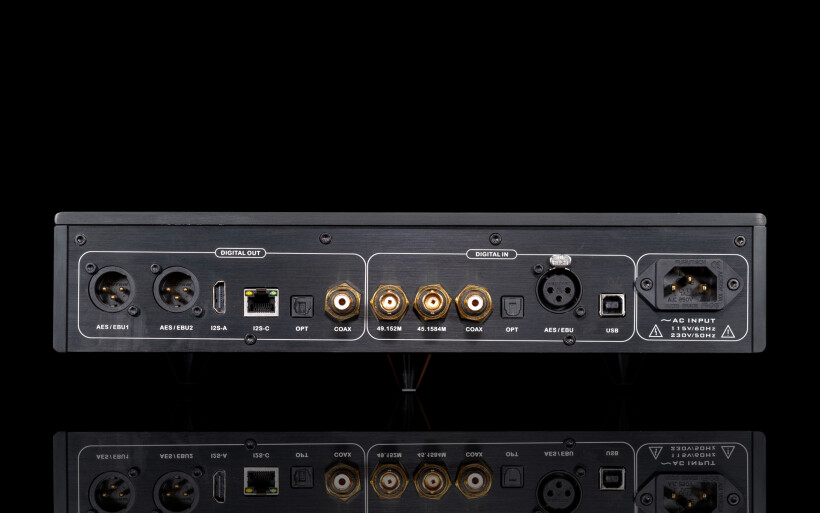 Let’s get back for a second to Gaia’s BNC inputs designed specifically to slave it to an external clocking device of choice. Here Denafrips Terminator Plus’ alike BNC outputs come into play. If bonded like so, these two machines promise us perfectly synchronised digital action, while the understanding why one would want to do that is the most interesting bit. In short, clocks the closest to the D/A conversion circuit are the least susceptible to jitter hence best and those to use in the first place. In this context Gaia strapped via BNCs to Terminator Plus’ kosher twin OCXOs relies on their superiority and promises to dispatch even cleaner data to this DAC in return. Whether this conjoined effort leaves any audible footprint remains to be seen, but a clock signal that doesn’t have to travel through connections and cables should be better. To further emphasize that point, PS Audio’s digital guru Ted Smith once said that jitter is born even in-between clocks and D/A networks mere millimeters away.
Let’s get back for a second to Gaia’s BNC inputs designed specifically to slave it to an external clocking device of choice. Here Denafrips Terminator Plus’ alike BNC outputs come into play. If bonded like so, these two machines promise us perfectly synchronised digital action, while the understanding why one would want to do that is the most interesting bit. In short, clocks the closest to the D/A conversion circuit are the least susceptible to jitter hence best and those to use in the first place. In this context Gaia strapped via BNCs to Terminator Plus’ kosher twin OCXOs relies on their superiority and promises to dispatch even cleaner data to this DAC in return. Whether this conjoined effort leaves any audible footprint remains to be seen, but a clock signal that doesn’t have to travel through connections and cables should be better. To further emphasize that point, PS Audio’s digital guru Ted Smith once said that jitter is born even in-between clocks and D/A networks mere millimeters away.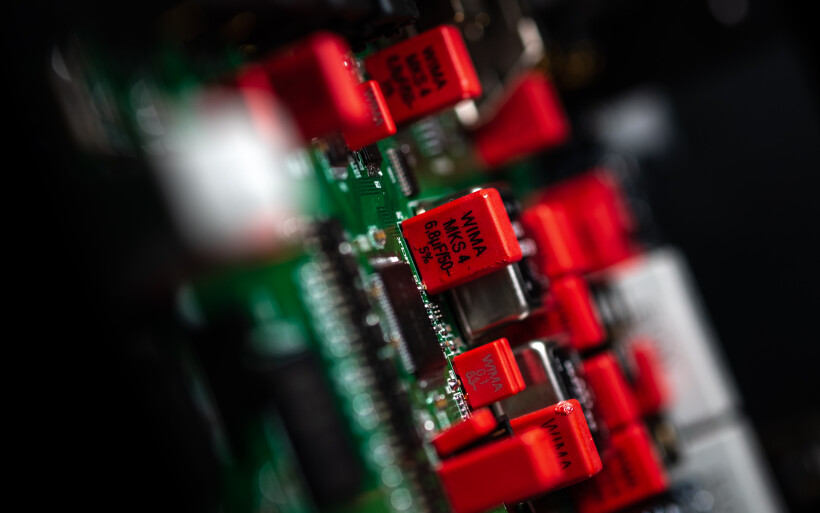 Upon opening Gaia’s bonnet we see quite the interior clearly fit for a standalone product that Terminator Plus’ inside wouldn’t accommodate. Just after the former’s IEC inlet sit AC filters with current monitoring and overcurrent protection components. Its linear PSU comprises of a large shielded O-core transformer and multiple low-noise LDOs. STMicroelectronic STM32F446 ARM chipset infused with Denafrips’ in-house developed code handles USB, while data from remaining inputs goes directly into a FPGA logic also responsible for DSP. Incoming signal stored in a FIFO buffer is then reclocked via two OCXO clocks that operate at 45.12/49.15MHz to target 44.1/48kHz sample rates and their multiples. High-speed photocouplers isolate all digital routes. And lastly, Denafrips Gaia priced at €1’500 is its makers’ TOTL DDC effort. Their second best Hermes sold for €700 less features a metal enclosure that houses lower-tiered ‘femto’ clocks, while the entry-level Iris gets a simpler PSU, only a USB input and smaller box that demands €450.
Upon opening Gaia’s bonnet we see quite the interior clearly fit for a standalone product that Terminator Plus’ inside wouldn’t accommodate. Just after the former’s IEC inlet sit AC filters with current monitoring and overcurrent protection components. Its linear PSU comprises of a large shielded O-core transformer and multiple low-noise LDOs. STMicroelectronic STM32F446 ARM chipset infused with Denafrips’ in-house developed code handles USB, while data from remaining inputs goes directly into a FPGA logic also responsible for DSP. Incoming signal stored in a FIFO buffer is then reclocked via two OCXO clocks that operate at 45.12/49.15MHz to target 44.1/48kHz sample rates and their multiples. High-speed photocouplers isolate all digital routes. And lastly, Denafrips Gaia priced at €1’500 is its makers’ TOTL DDC effort. Their second best Hermes sold for €700 less features a metal enclosure that houses lower-tiered ‘femto’ clocks, while the entry-level Iris gets a simpler PSU, only a USB input and smaller box that demands €450.
Sound
Innuos Statement handled storage/transport, then Denafrips Gaia passed signal to Terminator Plus that went via XLRs into a Trilogy 915R/995R set. From there Boenicke S3 speaker cable connected either to sound|kaos Vox 3afw or Boenicke Audio W11 SE+ speakers. All key hardware was powered by Boenicke Audio Power Gate distributor box plus its three captive M2 cords and two LessLoss C-MARCs. The USB chain included only one Mercury3.0 USB cable. A set of external LessLoss Firewall for Loudspeakers modules complimented both speaker sets, while a Fidelizer EtherStream was in-between my Linksys WRT160N router and Innuos Statement server. ISOL-8’s Prometheus PSU connected to the router and network switch.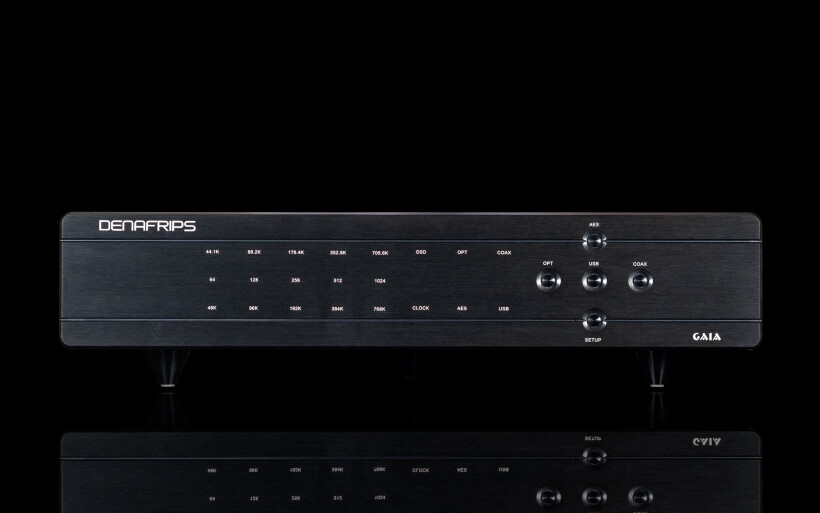 Gaia’s arsenal naturally turned Terminator Plus into the primary DAC that allowed for instant switches between its I2S and AES/EBU inputs to map how much better the former route was, if any at all. Investigating Gaia’s clocks on/off sync with those of the DAC was as easy, several quick button presses were all that was needed to un/bond them. After covering these two bases my setup’s performance was investigated either without Gaia or with it fully connected (via I2S and twin BNCs) to the Terminator Plus. Then Innuos Statement had to step down to make room for fidata HFAS1-S10U, just so I could either confirm/deny any noticed patterns, or/and possibly discover something new and meaningful.
Gaia’s arsenal naturally turned Terminator Plus into the primary DAC that allowed for instant switches between its I2S and AES/EBU inputs to map how much better the former route was, if any at all. Investigating Gaia’s clocks on/off sync with those of the DAC was as easy, several quick button presses were all that was needed to un/bond them. After covering these two bases my setup’s performance was investigated either without Gaia or with it fully connected (via I2S and twin BNCs) to the Terminator Plus. Then Innuos Statement had to step down to make room for fidata HFAS1-S10U, just so I could either confirm/deny any noticed patterns, or/and possibly discover something new and meaningful.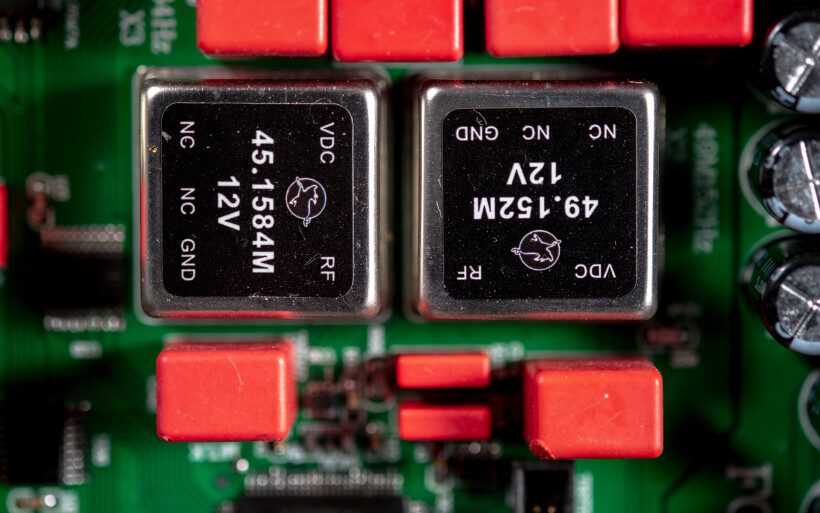 Today’s adventure was my first that included I2S, so I had no expectations. Still, the ability to rapidly switch Terminator Plus’ inputs came in handy. Past a short listen I had to press pause in the Innuos Sense app, take two steps, press this DAC’s input selector four times, then go back, have a seat and hit play again, which took about five seconds in total. Even though audio comparisons very rarely are this convenient, for the first time I felt that a remote wand for the big Denafrips would make my life even easier, but I digress. The difference between Terminator Plus’ two active inputs was barely noticeable at first, so I had to constantly focus and do multiple back and forths to map anything firm to hold on to. This was the clear indicator that disparities I was after weren’t big at all.
Today’s adventure was my first that included I2S, so I had no expectations. Still, the ability to rapidly switch Terminator Plus’ inputs came in handy. Past a short listen I had to press pause in the Innuos Sense app, take two steps, press this DAC’s input selector four times, then go back, have a seat and hit play again, which took about five seconds in total. Even though audio comparisons very rarely are this convenient, for the first time I felt that a remote wand for the big Denafrips would make my life even easier, but I digress. The difference between Terminator Plus’ two active inputs was barely noticeable at first, so I had to constantly focus and do multiple back and forths to map anything firm to hold on to. This was the clear indicator that disparities I was after weren’t big at all.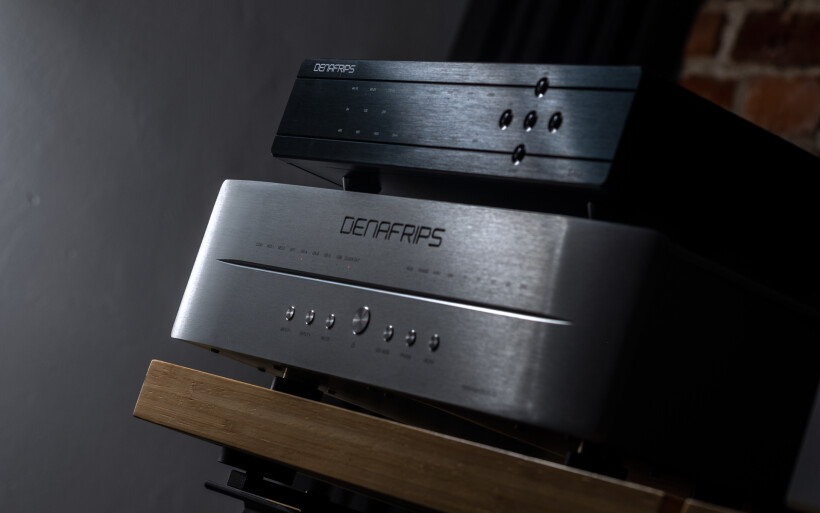 Some 30 minutes or so into the first audition Eivør Pálsdóttir’s track “Trøllabundin” finally got me somewhere. Mild drum hits that open this song locate on a haunting landscape filled with just air, and after a while Eivør’s finely outlined clear voice joins this image. On I2S her vocal was less itchy and a touch smoother especially during playback at high SPL, while drums heard early on had a tad more composure, momentum and slam. A ticking clock on Hecq’s “Steeltongued” remixed by Tobias Lilja was in a way less fleshy and more distant on AES/EBU that also rendered rapid blows a bit slower and bloomier. The I2S in time emerged as a touch speedier and more firm in general, but the most noticeable change was in its more surrounding atmospheric perspective versus somewhat flatter not as deep take of the other input.
Some 30 minutes or so into the first audition Eivør Pálsdóttir’s track “Trøllabundin” finally got me somewhere. Mild drum hits that open this song locate on a haunting landscape filled with just air, and after a while Eivør’s finely outlined clear voice joins this image. On I2S her vocal was less itchy and a touch smoother especially during playback at high SPL, while drums heard early on had a tad more composure, momentum and slam. A ticking clock on Hecq’s “Steeltongued” remixed by Tobias Lilja was in a way less fleshy and more distant on AES/EBU that also rendered rapid blows a bit slower and bloomier. The I2S in time emerged as a touch speedier and more firm in general, but the most noticeable change was in its more surrounding atmospheric perspective versus somewhat flatter not as deep take of the other input.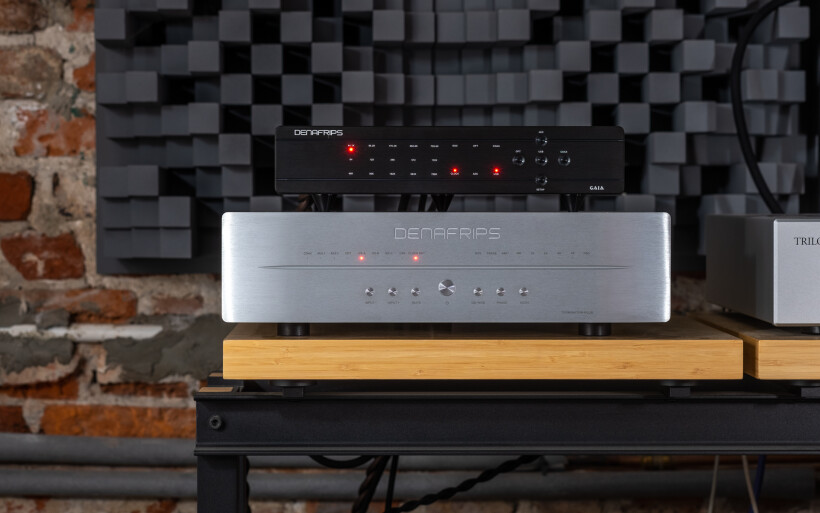 Let me repeat once more that differences above weren’t big by any stretch. Having said that, I think that even very seasoned ears wouldn’t map them right away. It quickly turned out that the same story was with strapping Gaia’s OCXOs to those inside its makers’ flagship DAC. This time around however the key sonic shift narrowed down to articulation and resolution. With these clocks not bonded my setup sounded fuzzier, less caffeinated, less vibrant and with fewer bits floating in air. Introductory drums on “Trøllabundin” had a bit more wobble to them so were less precise. The clock on “Steeltongued” had its contours more loose and thicker. Upon slaving Gaia’s OCXOs everything firmed up and shine upstairs was smoother yet as radiant, while extra details were served without paying up in leaner aesthetic, drier textures or losses anywhere else. These improvements were subtle, but arrived at no cost at all so were pure gains.
Let me repeat once more that differences above weren’t big by any stretch. Having said that, I think that even very seasoned ears wouldn’t map them right away. It quickly turned out that the same story was with strapping Gaia’s OCXOs to those inside its makers’ flagship DAC. This time around however the key sonic shift narrowed down to articulation and resolution. With these clocks not bonded my setup sounded fuzzier, less caffeinated, less vibrant and with fewer bits floating in air. Introductory drums on “Trøllabundin” had a bit more wobble to them so were less precise. The clock on “Steeltongued” had its contours more loose and thicker. Upon slaving Gaia’s OCXOs everything firmed up and shine upstairs was smoother yet as radiant, while extra details were served without paying up in leaner aesthetic, drier textures or losses anywhere else. These improvements were subtle, but arrived at no cost at all so were pure gains.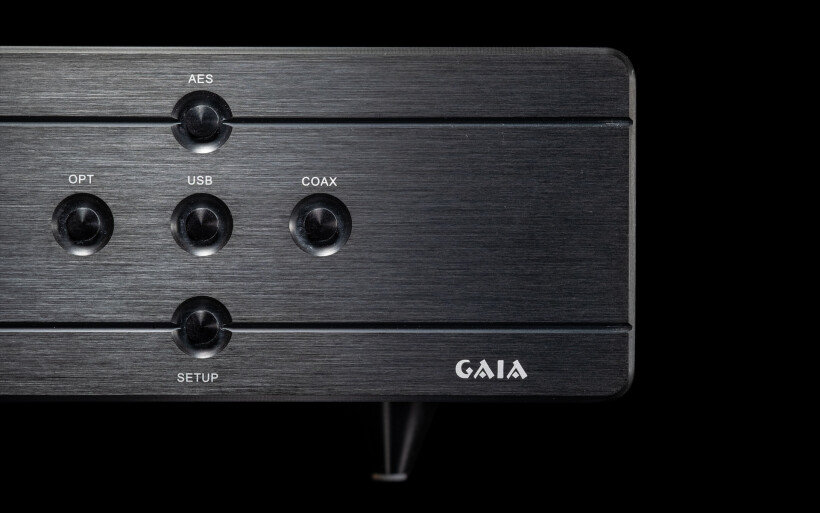 Although all exercises up to this point didn’t result in any evidence I’d consider as truly meaningful, some observations were firm. My system sounded a notch posher and awake upon feeding Terminator Plus via I2S, while strapping Gaia to it pushed that envelope a bit more to further stress that these products should dance together. Past wrapping my head around that it was time to map how my setup did with Gaia entirely on/off. Upon removing that DDC my platform scored noticeably higher on immediacy, propulsion, directness and overall elastic lively feel, though several points had to be taken from color and bass heft. Interestingly, oxygenation and spatial grandeur remained intact during these changes but the ratio of gains and losses wasn’t equal. My rig did audibly better without Gaia in it and rather clearly at that, but the understanding why this was the case didn’t take long.
Although all exercises up to this point didn’t result in any evidence I’d consider as truly meaningful, some observations were firm. My system sounded a notch posher and awake upon feeding Terminator Plus via I2S, while strapping Gaia to it pushed that envelope a bit more to further stress that these products should dance together. Past wrapping my head around that it was time to map how my setup did with Gaia entirely on/off. Upon removing that DDC my platform scored noticeably higher on immediacy, propulsion, directness and overall elastic lively feel, though several points had to be taken from color and bass heft. Interestingly, oxygenation and spatial grandeur remained intact during these changes but the ratio of gains and losses wasn’t equal. My rig did audibly better without Gaia in it and rather clearly at that, but the understanding why this was the case didn’t take long.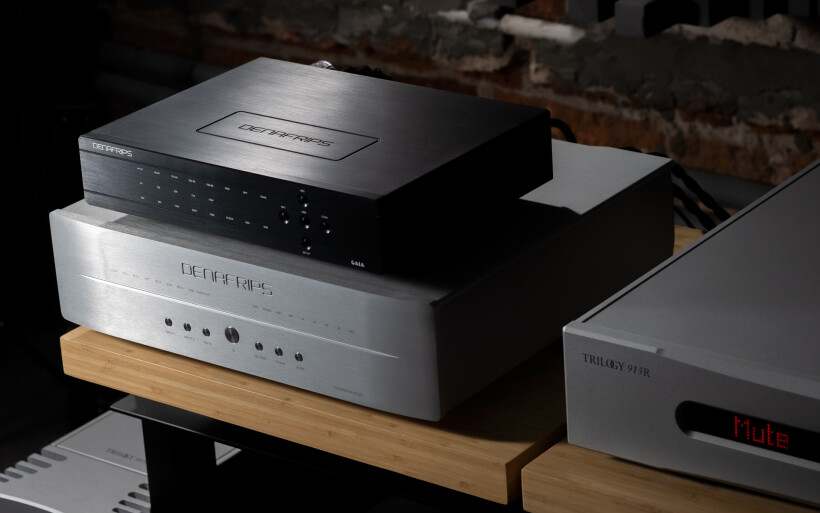 Innuos Statement’s very snappy powerful sonic profile forms a brilliantly balanced aural blend with Terminator Plus’ earthy dense sonic backbone that’s infused with textural content that makes its voice rich and organic. The way how Gaia handicapped the former’s quickness and injected extra color wasn’t a quality increase to my taste but a sideways move at best that altered the fine equilibrium. Not only this, Innuos’ awesome PhoenixUSB in-built into my reference server/streamer conditions its USB out so well that it effectively sent iFi audio’s micro iUSB3.0 and iGalvanic3.0 to a retirement home. Put shortly, my main setup doesn’t benefit from extra digital boxes because of the flagship Innuos platform in there. Luckily I had just the product to verify whether these observations were any true.
Innuos Statement’s very snappy powerful sonic profile forms a brilliantly balanced aural blend with Terminator Plus’ earthy dense sonic backbone that’s infused with textural content that makes its voice rich and organic. The way how Gaia handicapped the former’s quickness and injected extra color wasn’t a quality increase to my taste but a sideways move at best that altered the fine equilibrium. Not only this, Innuos’ awesome PhoenixUSB in-built into my reference server/streamer conditions its USB out so well that it effectively sent iFi audio’s micro iUSB3.0 and iGalvanic3.0 to a retirement home. Put shortly, my main setup doesn’t benefit from extra digital boxes because of the flagship Innuos platform in there. Luckily I had just the product to verify whether these observations were any true.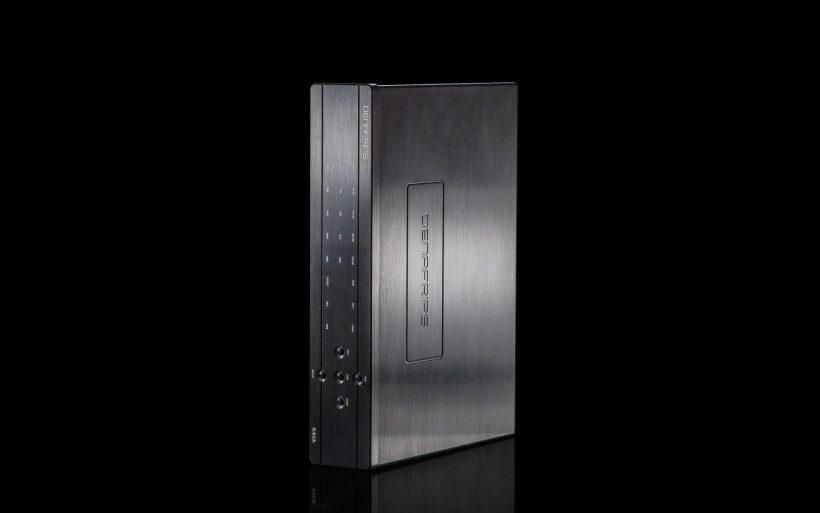 Replacing the Statement with fidata HFAS1-S10U caused quite the stir mainly because the latter’s USB output is very susceptible to any tweaks that make it better. That’s why I saw iFi’s full USB stack as mandatory companions for it. But more importantly, fidata’s romantic, warm and charming gearing perfectly matched Pacific’s rapid, lean sporty approach. Now it should be clear that this transport with Terminator Plus instead of Pacific shifted the meta towards even darker, chunkier and thicker realm. Although without Gaia that was heard loud and clear, with it engaged my setup did a 180 towards extra light, quickness, shine and the lot. If with the Statement followed by this DDC my platform took one step back, upon replacing this Innuos with fidata it made two steps forward.
Replacing the Statement with fidata HFAS1-S10U caused quite the stir mainly because the latter’s USB output is very susceptible to any tweaks that make it better. That’s why I saw iFi’s full USB stack as mandatory companions for it. But more importantly, fidata’s romantic, warm and charming gearing perfectly matched Pacific’s rapid, lean sporty approach. Now it should be clear that this transport with Terminator Plus instead of Pacific shifted the meta towards even darker, chunkier and thicker realm. Although without Gaia that was heard loud and clear, with it engaged my setup did a 180 towards extra light, quickness, shine and the lot. If with the Statement followed by this DDC my platform took one step back, upon replacing this Innuos with fidata it made two steps forward. Considering previous triangulations, past putting Gaia in-between fidata and Terminator Plus it was only fair to expect even more gravity, warmth, chunk and stuffiness, but this wasn’t the case at all. Aspects related to color, density and tissue on key sound sources remained pretty much intact, while increased snap, openness, articulation, feistiness, smoothness and sheer amount of subtleties in air implied clear improvements, that previously had to be masked under fidata’s untreated USB. In that scenario Gaia’s action was anything but counterproductive and my setup with it sounded better indeed, while Terminator Plus’ alike behavior past comparing again its digital inputs and clock strapping was now more pronounced thus easier to track. Needless to say, I didn’t expect that twist, let alone quality boost that came along with it. It’s time to wrap.
Considering previous triangulations, past putting Gaia in-between fidata and Terminator Plus it was only fair to expect even more gravity, warmth, chunk and stuffiness, but this wasn’t the case at all. Aspects related to color, density and tissue on key sound sources remained pretty much intact, while increased snap, openness, articulation, feistiness, smoothness and sheer amount of subtleties in air implied clear improvements, that previously had to be masked under fidata’s untreated USB. In that scenario Gaia’s action was anything but counterproductive and my setup with it sounded better indeed, while Terminator Plus’ alike behavior past comparing again its digital inputs and clock strapping was now more pronounced thus easier to track. Needless to say, I didn’t expect that twist, let alone quality boost that came along with it. It’s time to wrap.
Summary
All evidence collected above can be now encapsulated in these three takeaways. Speaking exclusively sonics, Gaia’s input that varied from not needed to highly beneficial turned it into a situational affair that I wouldn’t match with the Statement, but with fidata’s deck I very much would. Terminator Plus benefits from having this DDC nearby and works best on I2S that beats AES/EBU. And lastly, Gaia’s unexpected action in-between that DAC and fidata proved efficacious and meaningful in spite of what their normally mismatched profiles might imply. This biggest surprise of them all renders today’s Denafrips as useful in systems that rely on not yet sorted USB regardless of their overall flavor. In such an environment Gaia’s own sonic footprint doesn’t matter but its foundational cleansing job does.
As far as its utilities go, Denafrips Gaia features more i/o than most people might ever need and on this front stands tall as solid and truly future-proof. This enjoyably automated nicely assembled box worked flawlessly to effectively turn all hardware triangulations on my reviewer to-do list into a breeze. But most importantly, Gaia on duty with fidata was very impressive and surpassed initial expectations. In that specific context alone and considering my system’s total value, this DDC’s price struck me as nowhere near extortionate, while included functionalities and brilliant MO make it this much more appealing. It’s not for me to say whether your setup would respond to this Denafrips just as mine did, but giving it a test drive won’t hurt if you roll with USB and are after its kind. ‘Til next time!
Associated Equipment:
- Amplifier: Trilogy 995R
- DAC: LampizatOr Pacific (KR Audio T-100 / Living Voice 300B + KR Audio 5U4G Ltd. Ed.), Denafrips Terminator Plus
- Speakers: Boenicke Audio W11 SE+, sound|kaos Vox 3afw
- Transport: Innuos Statement
- Preamplifier: Trilogy 915R
- Speaker cables: Boenicke Audio S3, LessLoss C-MARC
- Speaker signal conditioning: LessLoss Firewall for Loudspeakers
- Interconnects: Boenicke Audio IC3 CG
- Power components: Gigawatt PC-3 SE EVO+/LC-3 EVO, LessLoss C-MARC, Boenicke Audio Power Gate, iFi audio PowerStation, ISOL-8 Prometheus
- USB components: iFi audio Mercury3.0
- Rack: Franc Audio Accesories Wood Block Rack
- Network: Fidelizer EtherStream, Linksys WRT160N
- Music: NativeDSD
Retail prices of reviewed components in EU (incl. tax):
- Denafrips Gaia: €1’500


